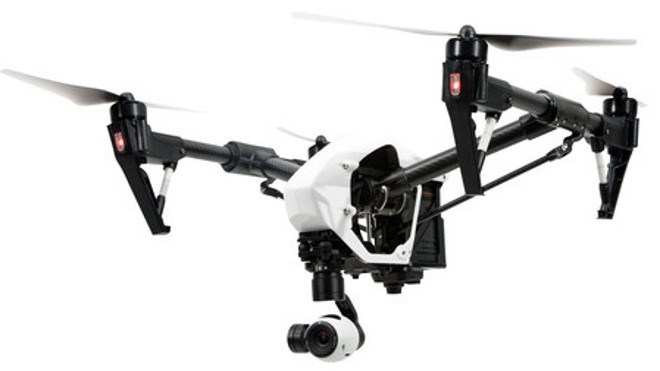A hobby that has been growing in popularity may also be outrunning the regulations that have been set in place.
Unmanned aerial vehicles (UAVs), or drones as they're usually called, have become a popular tool and toy for hobbyists and videographers alike.
The miniature unmanned aircrafts can be piloted by remote control from the ground by the operator, and can reach speeds of up to 50 km/h. These machines have a battery life of anywhere between 15 to 25 minutes of flight time and can reach ranges of as far as a mile away from the operator.
Where these aircraft really shine is their ability to have high-res cameras mounted to them to capture some beautiful, never-before-seen points of view of anything you can get the drone in range of.
In Sudbury, for example, a hobbyist going by the name of Drone Malone has been gaining popularity for his videos of local events and landmarks.
But when amateurs use this equipment, issues can arise, as while these drones have the ability to reach impressive heights and go places most of us cannot, there are inherent dangers with flying an unmanned vehicle.
That includes the possibility of drones coming in contact with aircraft.
John Hartman is a UAV pilot with Pro Sky Video, and has been certified by Transport Canada to fly a UAV for commercial purposes. In other words, Hartman can use his DJI Innovations Inspire quadcopter to record and sell video as a business.
Pro Sky Video records aerial videos for tourism, real estate, land inspection and mine surveying among others.
Hartman has done his homework and follows the guidelines set out by Transport Canada, but said that there is still a lot to be done in setting out a firm set of regulations.
“There is still quite a lot of grey area when it comes to UAVs,” said Hartman.
“It's not like a hobby like hunting where if you're going to be out carrying a gun you need to be able to prove yourself, there's tests and courses to take. When I first started out the process of doing this commercially, there were no official applications.”
Hartman explains that all Transport Canada can do right now, due to a lack of legislation, is set out guidelines for those looking to attain a Special Flight Operations Certification (SFOC). The onus is on the pilot to draw up their application.
“You have to develop a document on your own, outlining exactly what you're going to be doing, where and when you'll be flying,” said Hartman. “My first few applications were about 20 pages long, and that was to fly 70 feet off the ground for 10 minutes.”
On the commercial side, the outlines are a little more easily understood, but there are tons of loopholes and backdoors for the hobbyist to get around Transport Canada's fairly loose set of rules.
Transport Canada's website indicates the rules of operating a UAV as a set of “Do's and Don'ts” and are called safety guidelines rather than bylaws. Pilots of UAVs can be charged under the Criminal Code if the machines are used to invade someone's privacy or if they're trespassing on private property.
Pilots are also expected to adhere to the Canadian Aviation Regulations.
Messages such as “think safety first” are posted on the site.
These messages can be confusing for the amateur or hobbyist, and Hartman said he is in favour of the development of an official certification and application for the use of UAVs.
As for the UAVs themselves, they are a very accessible hobby, as starter kits run from about $75 to $150. Working your way up to a four-propeller drone would cost around $600 to $700, and for the DJI set up that Hartman uses, you're talking about $4,000 to $5,000.
“There's even more advanced ones that are used for movies, because these things have to lug around 25 pound cameras, and they can cost up to $20,000,” said Hartman.
While the top-end aircraft aren't accessible to most, the lower end are more than affordable, and Hartman believes that their popularity will grow exponentially, thus leading to more risk of a bad accident.
“With these machines it makes it possible for amateurs to make really professional-looking videos, post them online and get a lot of hits,” said Hartman.
“With more people wanting to do this and make videos and having more of these UAVs in the air it's more than likely just a matter of time before something happens, especially when it's amateurs who are operating them.
“There have been a few times where I've been flying on the outskirts of town and a helicopter will be coming in from North Bay and I have to be able to manoeuvre the UAV to the ground. There's just a lot of things that can go wrong where you should be certified so you know what to do in the event of anything unexpected.”
For more on Pro Sky Video, visit www.proskyvideo.com.
Check out the Transport Canada UAV safety requirements here.
Join Sudbury.com+
- Messages
- Post a Listing
- Your Listings
- Your Profile
- Your Subscriptions
- Your Likes
- Your Business
- Support Local News
- Payment History
Sudbury.com+ members
Already a +member?
Not a +member?
Sign up for a Sudbury.com+ account for instant access to upcoming contests, local offers, auctions and so much more.
